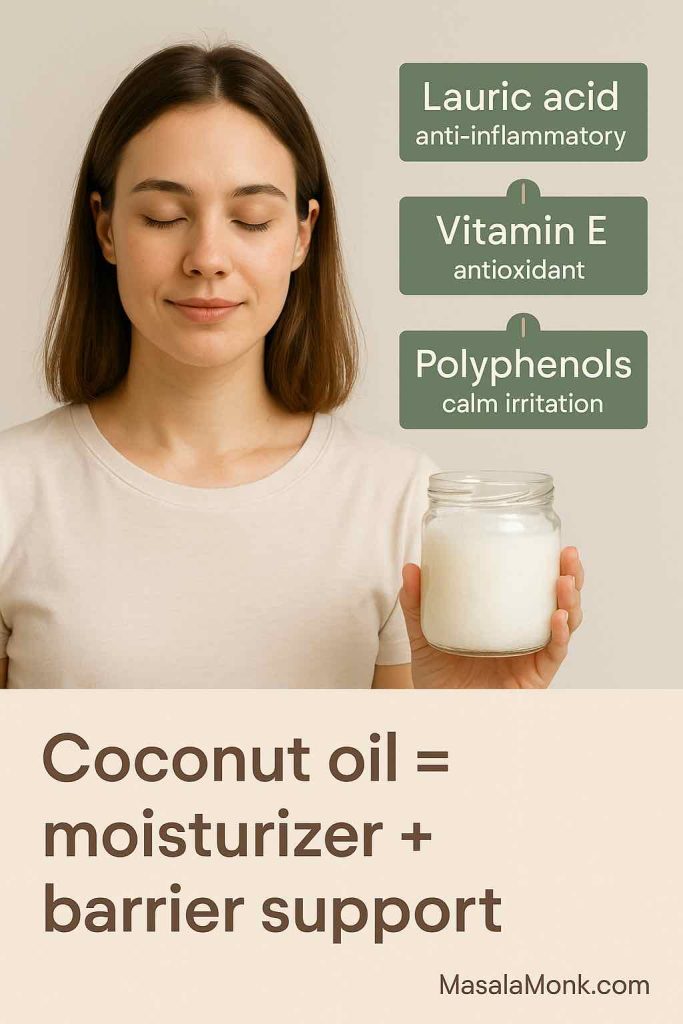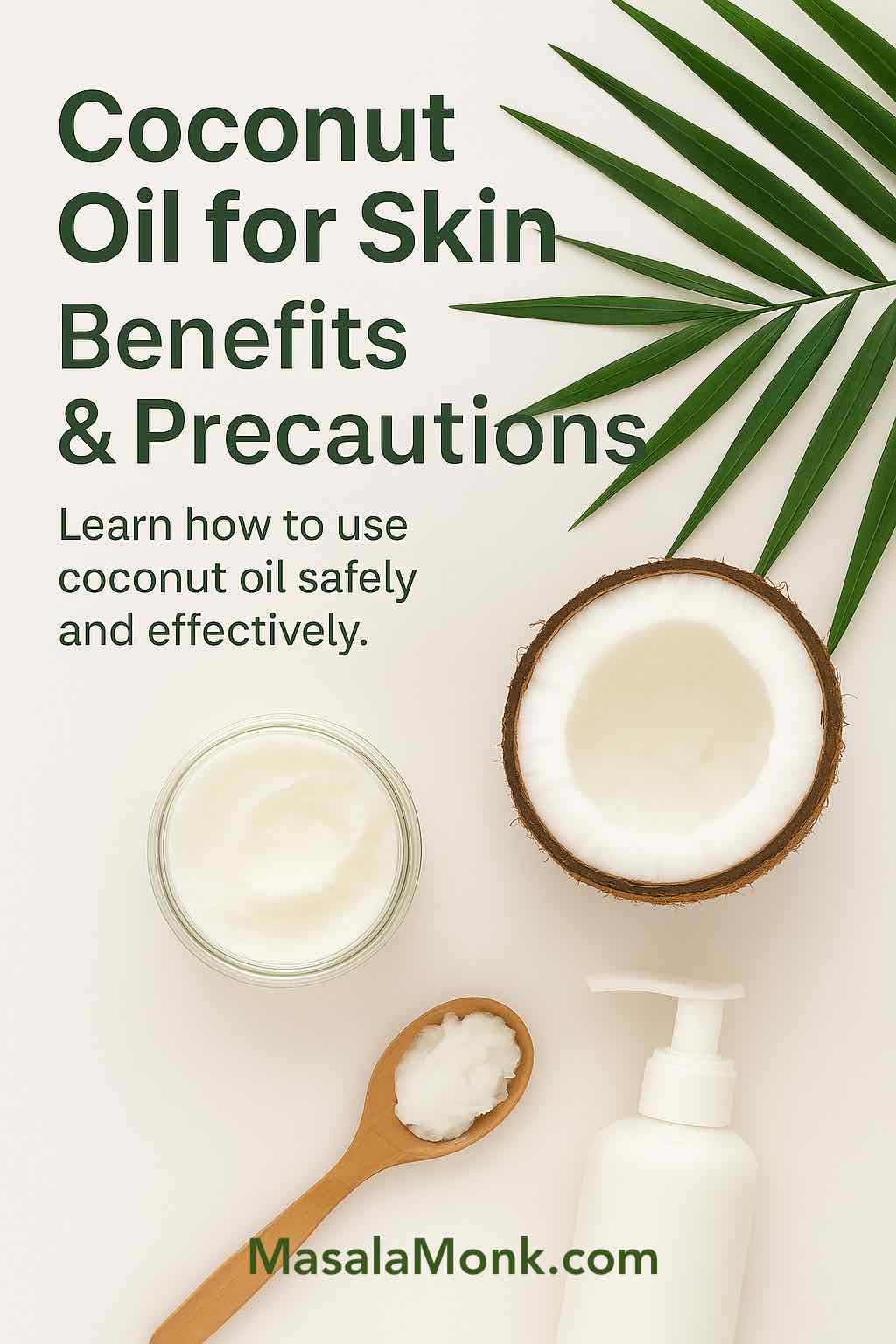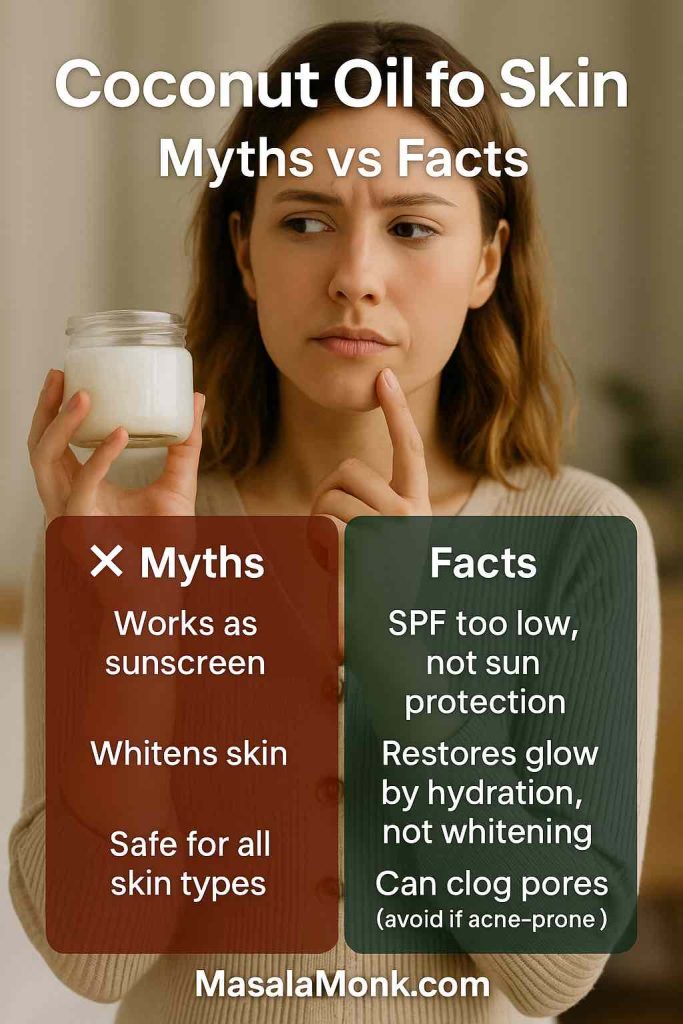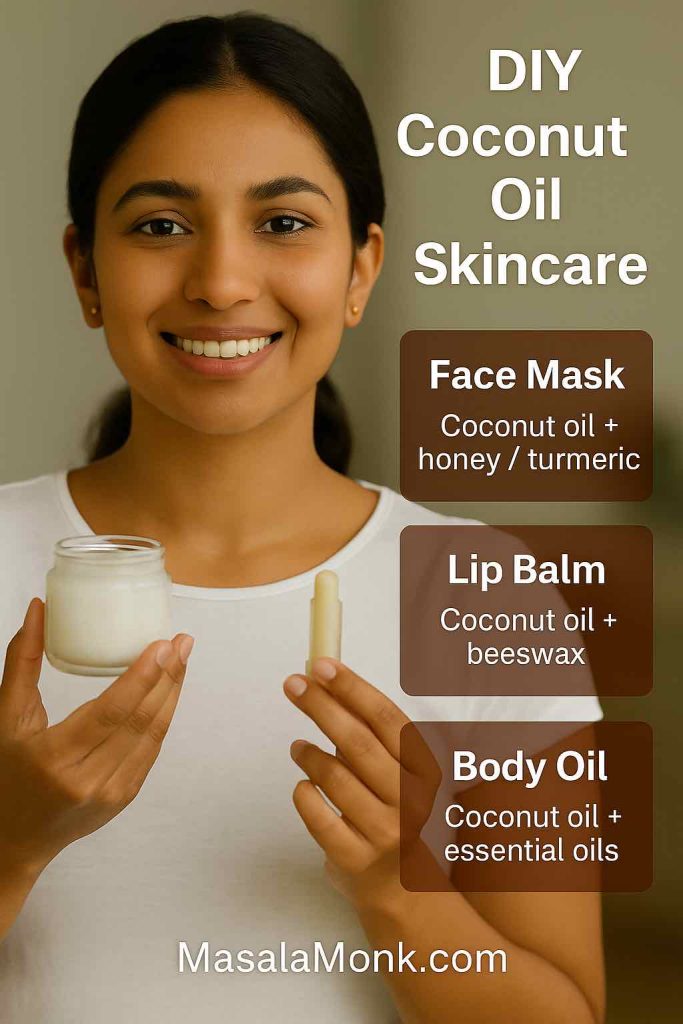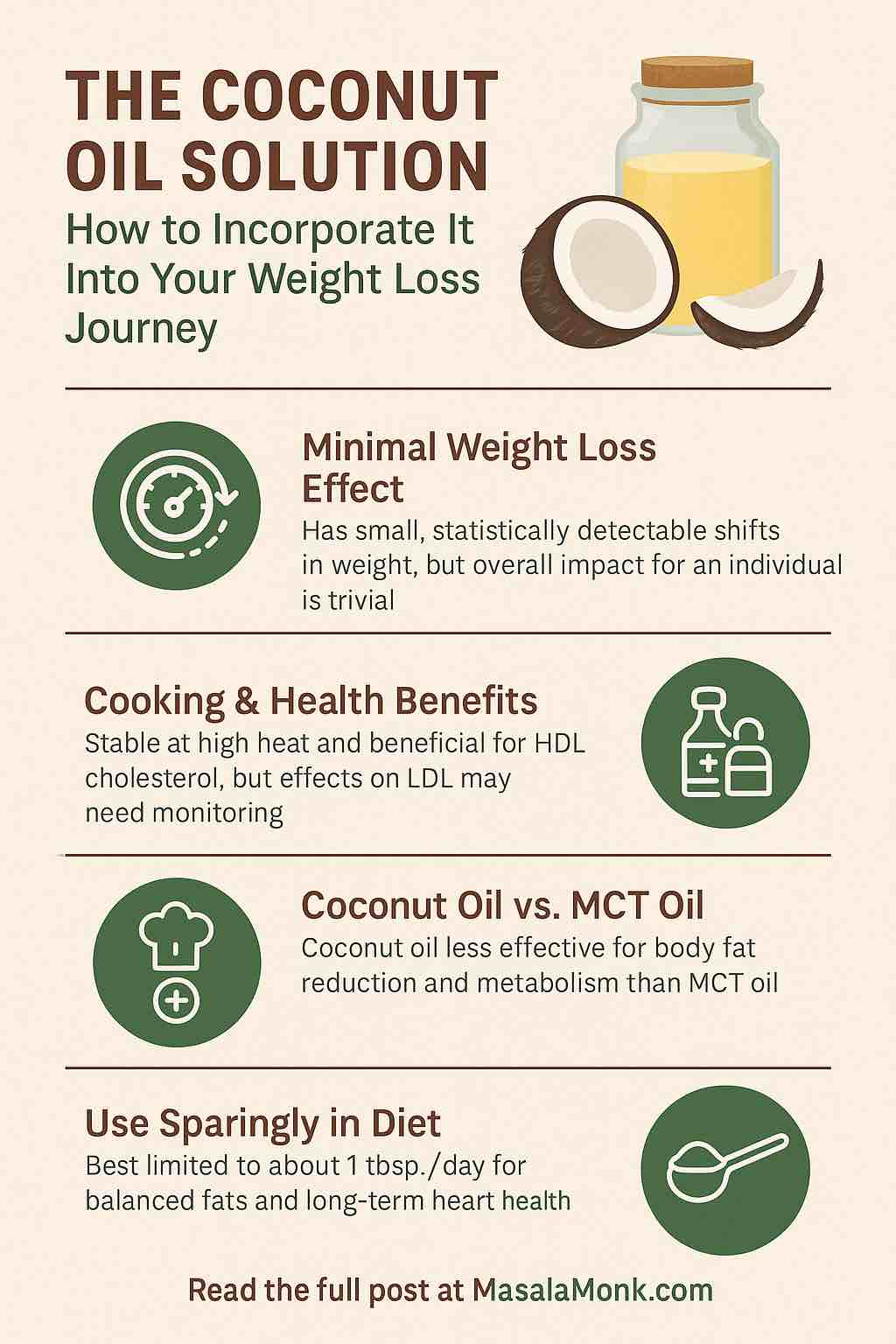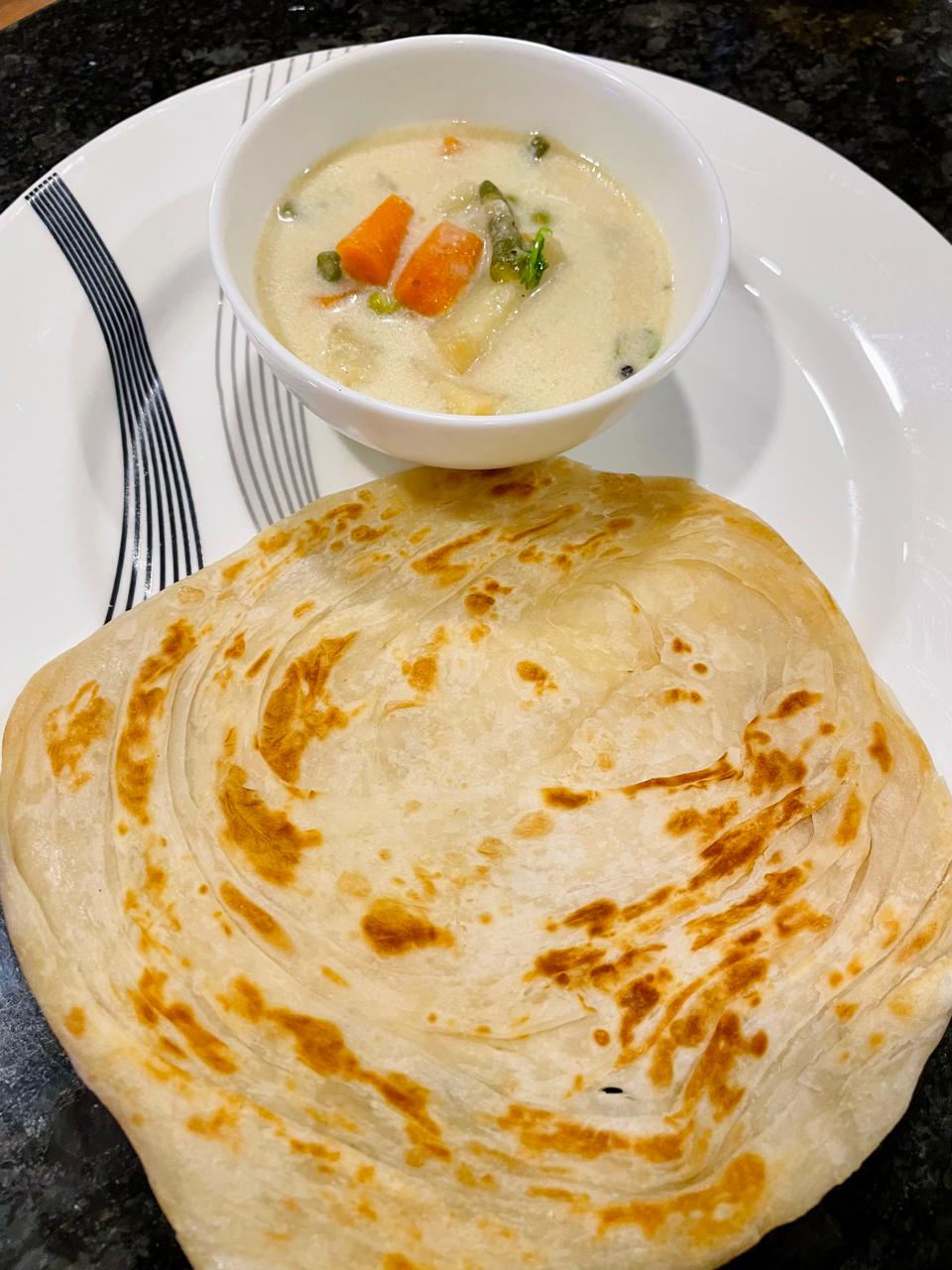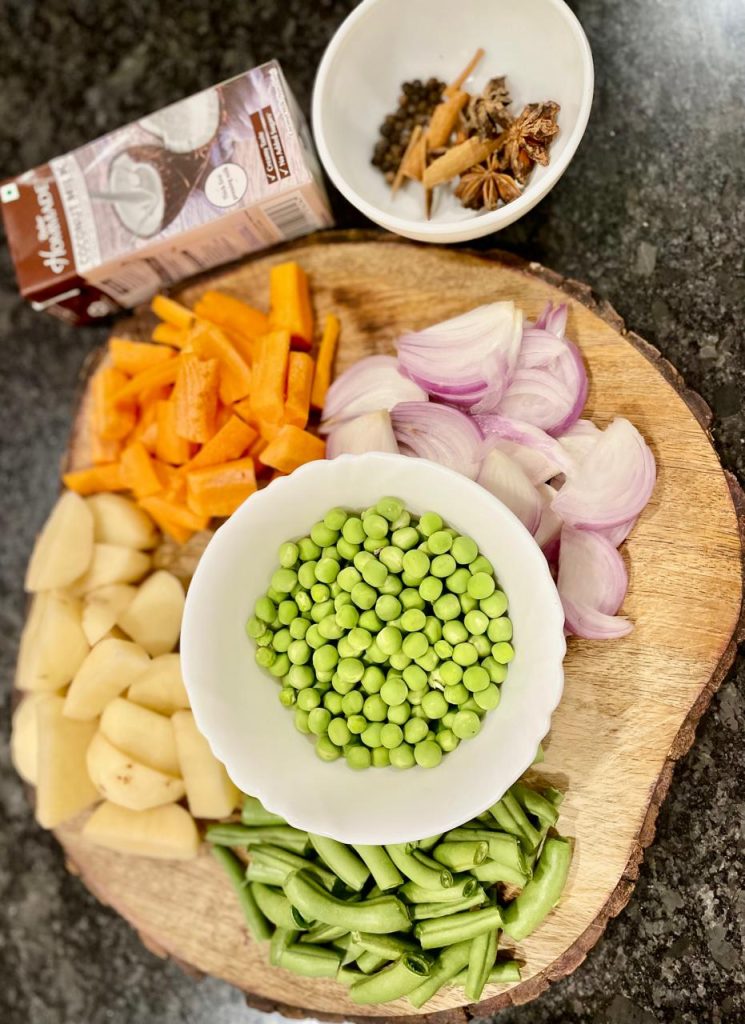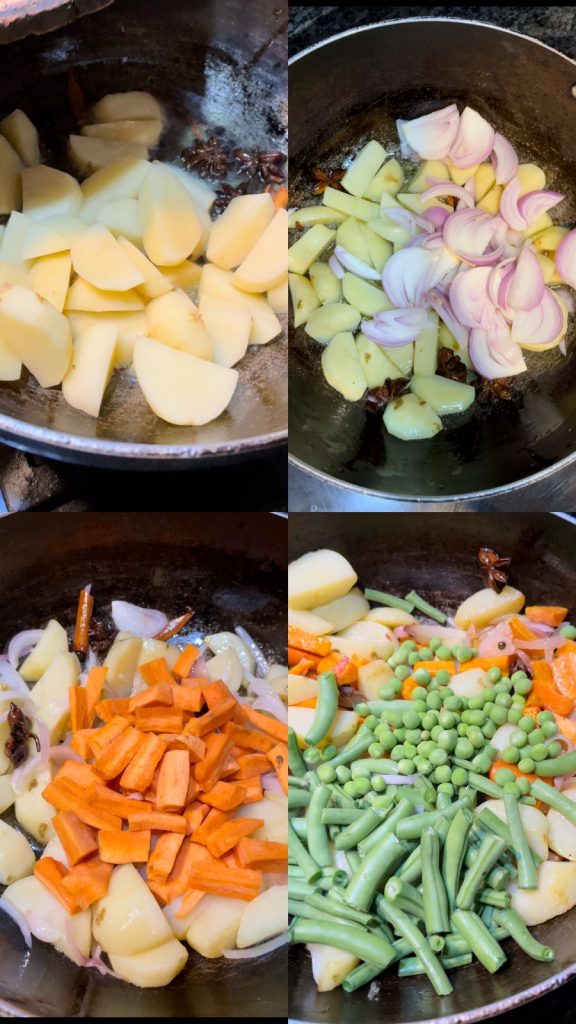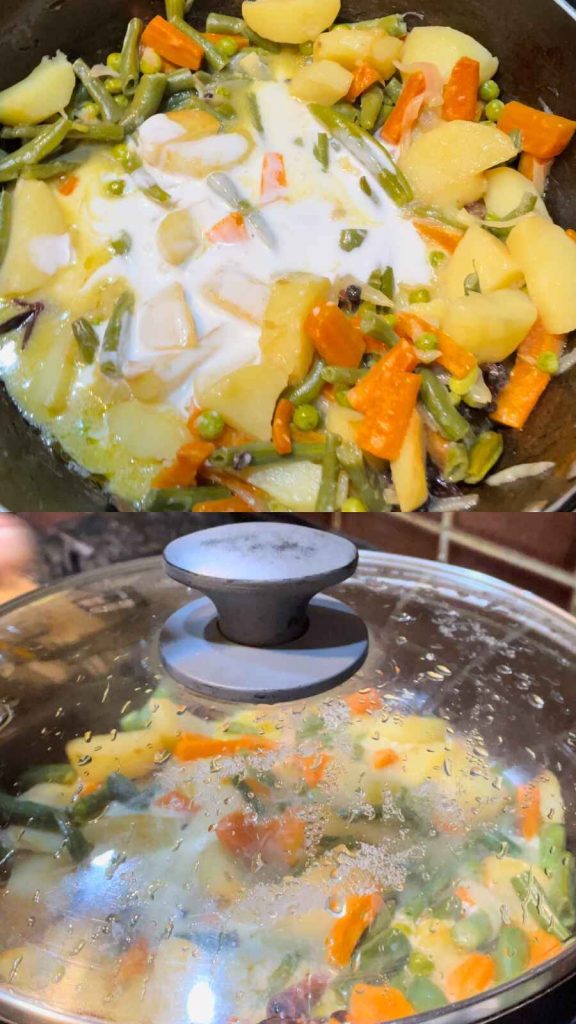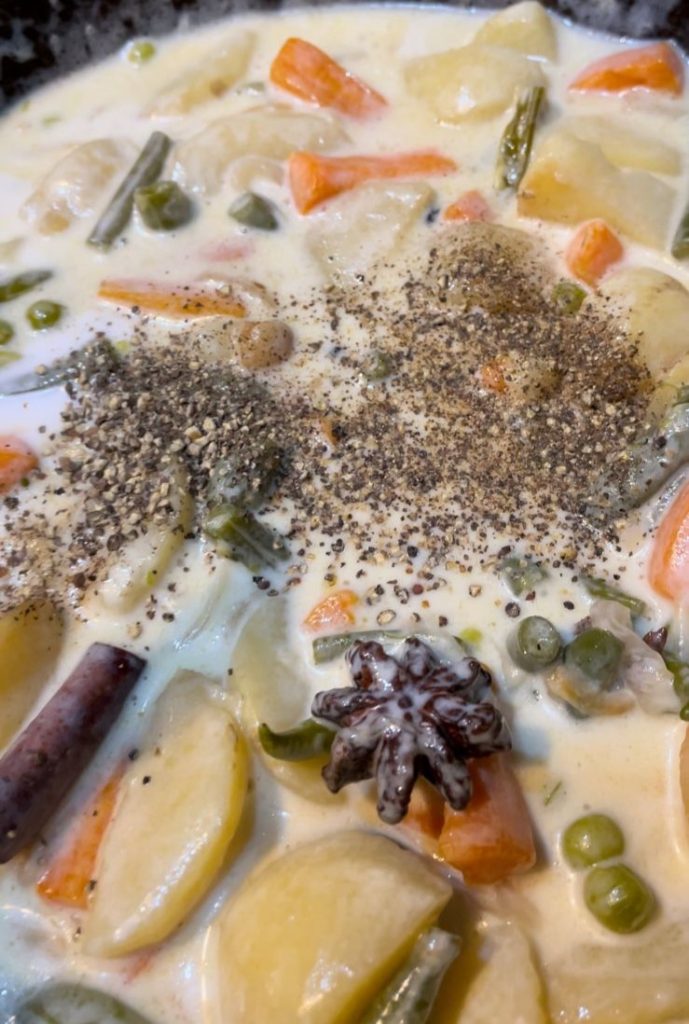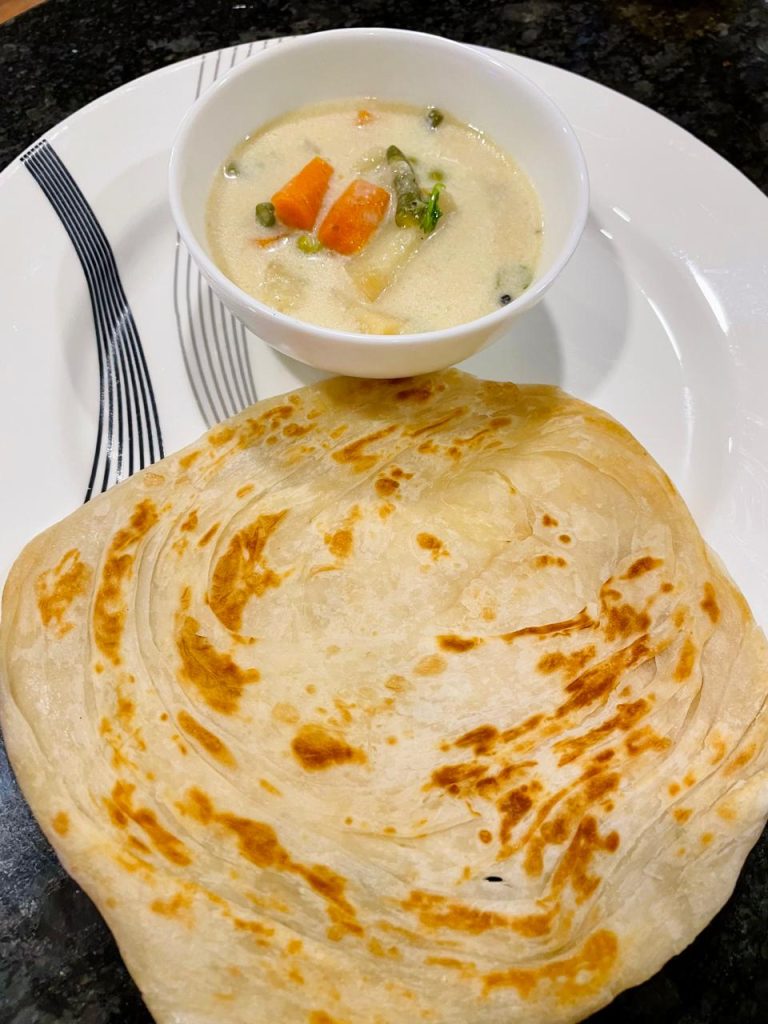
Oil pulling is disarmingly simple: swish a spoonful of edible oil around your mouth, then spit and brush. Even so, once you decide to try it, a practical question immediately rises to the top—what’s the best oil for oil pulling? Because this habit touches both Ayurveda and modern dentistry, the most helpful answer balances taste and texture, everyday comfort, and what the current (still modest) evidence actually shows. Consequently, this guide begins with a quick answer you can act on today; then, step by step, it walks through the research, the oils, the routine, and the safety boundaries that keep the practice sensible.
The quick answer (so you can choose and get going)
If you want the best oil for oil pulling, start with coconut oil or sesame (gingelly) oil. These two are most commonly used and the most studied. For a plain-English clinical stance, the American Dental Association sets clear guardrails in ADA MouthHealthy: Oil Pulling—they frame pulling as a possible adjunct, not a replacement for brushing with fluoride, interdental cleaning, and routine dental care. In a similar vein, the Cleveland Clinic’s oil pulling explainer offers a balanced hospital voice: helpful as an add-on, but not a cure-all.
Prefer something ultra-light that never solidifies in winter? In that case, MCT oil can be more comfortable, although direct trial data are sparse. Alternatively, if minimalism matters, olive oil is perfectly edible and easy to swish; however, modern clinical work still leans toward coconut and sesame. We’ll compare all of them in detail shortly; first, a quick look at what the literature actually measured—and what it didn’t—keeps the rest of this discussion honest.
What the research actually measured (in plain English)
Before we compare oils, context matters. Most oil-pulling studies are short-term (days to a few weeks) and small (dozens of participants). Nevertheless, there’s enough to sketch a realistic picture. A practical entry point is the open-access 2022 systematic review and meta-analysis, which pooled available trials and reported beneficial effects on oral bacterial counts and short-term plaque/gingival outcomes compared with controls, while emphasizing that higher-quality, longer studies are still needed.
If you prefer to see a single trial up close, a 2015 preliminary study on coconut oil for plaque-related gingivitis observed reductions in plaque and gingival indices across a few weeks when coconut oil pulling was added to normal hygiene. For perspective against a medical-grade mouthrinse, an experimental comparison with chlorhexidine (abstract) suggested oil pulling may improve short-term gingival metrics, yet chlorhexidine remained stronger for plaque in that model. In short, oil pulling is a gentle complement, not a therapeutic rinse.
With those guardrails in mind—and with the ADA overview and Cleveland Clinic explainer as your reality checks—we can choose an oil that you’ll actually use most mornings.
Oil pulling in Ayurveda (what kavala and gandusha mean)
In classical Ayurveda, oil use in the mouth appears as kavala (swishing) and gandusha (filling the mouth and holding). If you’d like a concise primer that situates oil pulling within that framework without overselling modern medical effects, scan this short review on kavala and gandusha. Today, most people adapt those ideas into a short, morning-friendly ritual that’s easy to keep. If you enjoy traditional approaches, you may also like this roundup of natural spices for dental health for everyday oral wellness context.
Choosing the best oil for oil pulling: comfort first, then evidence
Because oil pulling takes five to fifteen minutes, comfort isn’t a luxury—it’s everything. Consequently, the best oil for oil pulling is the one you’ll actually swish consistently. Here’s how the main options compare—by feel, flavor, and facts.
Coconut oil — mild, familiar, beginner-friendly
Why people choose it. Coconut oil tastes mild, melts quickly in the mouth, and leaves a clean finish. Moreover, if you’re new to oil pulling, its cream-to-liquid transition feels reassuringly smooth.
What studies suggest. The 2015 trial above reported short-term reductions in plaque and gingival indices as an add-on; pooled analyses point in the same direction: modest improvements over short windows when pulling complements brushing and interdental cleaning.
Practical notes. Coconut oil solidifies below ~24 °C. Therefore, on cooler mornings, warm your spoon or the jar briefly so the first minute of swishing feels comfortable. If you also cook with it and want a kitchen-side refresher, skim cooking with coconut oil FAQs for everyday use tips.
Sesame (gingelly) oil — classic, light, and always liquid
Why people choose it. Sesame is the traditional Ayurvedic choice for kavala/gandusha. Because it stays liquid even when your kitchen is chilly, it often feels “thinner” and easier to keep moving—especially in winter.
What the evidence suggests. Sesame appears across datasets summarized in the 2022 meta-analysis. Furthermore, a small but informative clinical paper found sesame performed similarly to chlorhexidine for short-term malodor control; see this 2014 trial on oral malodor for design details. In practice, many people who dislike coconut’s thickness settle on sesame and never look back.
Practical tip. Choose regular (untoasted) sesame. Toasted is culinary—too aromatic for swishing. For nutrition background that explains sesame’s popularity beyond oral care, see sesame seeds: health benefits and usage; if men’s health is on your radar, this quick read on top benefits of sesame seeds is a useful overview.
Sunflower oil — neutral and pantry-friendly
Why people choose it. It’s already on the shelf and tastes neutral. Consequently, sunflower is a reasonable fallback if coconut or sesame don’t appeal.
What the evidence suggests. Sunflower appears in older Indian clinical discussions and in newer comparative work that included multiple oils. For example, a triple-blind trial reported that coconut, sesame, and sunflower all improved gingival health, with coconut slightly ahead overall; you can read the design and outcomes in this 2024 randomized clinical trial (PubMed record also available). Sunflower therefore sits in the “edible and acceptable” column—less studied recently than coconut/sesame, but still reasonable if it keeps you consistent. If you’re browsing options, this guide to popular edible oils in India is a handy primer.
MCT oil — feather-light, never solidifies
Why people choose it. MCT oil feels feather-light and never turns solid, which can be the difference between “I tried once” and “I’ve been doing this for months.” If you gag with thicker oils, MCT often solves the problem.
What the evidence suggests. Direct randomized trials on MCT-only pulling are scarce. Even so, adherence often drives outcomes more than theoretical advantages; therefore, if MCT is the only oil you’ll actually use, it wins on practicality. For broader context on pooled oil-pulling data, revisit the 2022 meta-analysis.
Olive oil — accessible, pleasantly fruity for some
Why people choose it. It’s edible, familiar, and already in your kitchen. If you enjoy the flavor, you’ll likely swish longer and more happily.
What the evidence suggests. Modern pulling trials focus less on olive oil than on coconut and sesame. For a discussion that touches gingival contexts while acknowledging limited pulling-specific data, see this 2023 article on extra-virgin olive oil and gingivitis. Consequently, olive sits in the “personal preference” bucket rather than the “best-studied” one.
Bottom line. If you want a practical answer to which oil is best for oil pulling, choose coconut or sesame first for the strongest (still modest) research signal; then switch to MCT or olive if comfort or taste gets in the way. As the ADA overview and the Cleveland Clinic page both stress, oil pulling is an add-on, not a standalone strategy.
For a broader culinary context while you’re in the pantry, see this comparison of coconut oil vs ghee in Indian cooking; it won’t change your pulling choice, but it helps with stocking an oil you’ll actually use.
Clear answers to common questions (the things people actually search)
Can you use “vegetable oil” for oil pulling?
If “vegetable oil” means an edible oil like sunflower, sesame, or olive, then yes—you can swish with it. That said, modern research skews toward coconut and sesame; therefore, if you’re seeking the best oil for oil pulling with a little evidence at its back, choose one of those two. Nevertheless, if pantry convenience is what keeps you consistent, a neutral sunflower or olive oil is perfectly acceptable.
Oil pulling with sunflower oil
Sunflower oil is neutral and pantry-friendly. Although it’s less prominent in recent trials than coconut or sesame, it appears in comparative work (see the 2024 triple-blind RCT), and many people quietly prefer it because it’s bland and comfortable.
Is MCT oil good for oil pulling?
Yes—for comfort and adherence. MCT stays liquid even in winter and feels feather-light, which is exactly what some people need to avoid gagging. However, direct randomized clinical data on MCT for pulling are scarce. In practice, that’s fine: choose MCT if it keeps you consistent, then keep the fundamentals (fluoride brushing and interdental cleaning) intact.
What about olive oil for dental pulling?
Olive oil is edible and, for some, pleasantly fruity. Because comfort drives consistency, olive oil can be a sensible choice. However, as discussed in the 2023 olive-oil article, pulling-specific trials are limited; most controlled work focuses on coconut/sesame. If olive keeps you swishing without dread, it’s a reasonable fit.
Castor oil for oil pulling (and “how to oil pull with castor oil”)
Short answer: skip castor oil. It has a strong, lingering taste and is a stimulant laxative if swallowed. More importantly, there’s virtually no comparative clinical evidence supporting castor oil for pulling versus coconut or sesame. If someone insists, steer them gently toward edible, better-tolerated options—ideally coconut or sesame. Consistency matters far more than novelty here.
If you’re curious about castor in other contexts, here’s a primer on castor oil uses (beyond the mouth)—but for pulling, stick to edible pantry oils.
Tea tree oil for oil pulling (and other essential oils): safe to add?
Kind but firm: tea tree oil should not be used for oil pulling. It isn’t an edible oil; swallowing tea tree oil can be hazardous. For a clear, consumer-facing safety explainer, read U.S. Poison Control: Tea Tree Oil—Remedy and Poison; for a broader research-oriented overview, see NCCIH: Tea Tree Oil—Usefulness and Safety.
Referring to Posion.org here – Tea tree oil should not be taken by mouth for any reason, even though some traditional uses include tea tree oil as a mouthwash, treatment for bad breath, and treatment of toothache and mouth ulcers. If you want a minty finish after you spit and rinse, read our post on peppermint oil and dental health—as part of brushing and tongue cleaning, not for pulling.
Toasted vs. regular sesame for oil pulling
Skip toasted sesame oil. It’s intended for culinary flavoring and can contain aroma compounds you don’t want to swish. If you like sesame’s mouthfeel, choose regular (untoasted) sesame/gingelly oil.
Turmeric in the oil for pulling?
You’ll see social posts about turmeric-infused oil or “golden oil.” Realistically, this sits outside what’s been studied for pulling. Turmeric can stain surfaces and has a strong taste; moreover, powdered additives change mouthfeel and can increase gag potential. If you love turmeric, keep it in your cooking; for oil pulling, stick with plain edible oils—ideally coconut or sesame.
What oil pulling can do—and what it can’t
Oil pulling can make your mouth feel cleaner. In short-term studies, it has nudged plaque and gingival scores in a good direction when layered onto brushing and interdental cleaning. However, it cannot replace the basics, and it does not treat infections, cavities, or deep dental problems. If you have pain, swelling, fever, or sensitivity that lingers, book a dental exam rather than swishing harder. The ADA overview is very clear on this, and the Cleveland Clinic piece echoes the point.
Toothache and cavities: quick, honest guidance
If a tooth hurts, oil pulling won’t fix the cause. Toothache usually signals inflammation inside the tooth or around the root; that needs professional care. Pulling can be part of feeling fresher while you wait for your appointment, but please don’t use it to delay treatment. Likewise, oil pulling doesn’t “heal” a cavity. The reliable path to fewer cavities remains the boring one: fluoride toothpaste, interdental cleaning, and regular professional visits (with dietary tweaks if recommended). For short-term comfort ideas while you arrange care, try these home remedies for toothache.
Receding gums and gum disease: clear expectations
Recession means the gum has pulled away and exposed more of the tooth. Oil pulling cannot reverse that. At best, it fits alongside your routine, helping limit soft plaque before you brush. Periodontal disease, by contrast, happens below the gumline, where hardened tartar (calculus) builds up; only professional care removes it. If your gums bleed or feel puffy, pair gentle pulling with fluoride brushing, interdental cleaning, and a periodontal evaluation—then reassess after your cleaning plan.
Bad breath (halitosis): will oil pulling help?
Morning breath is common—your mouth dries overnight and bacteria flourish. Swishing first thing can loosen that film so brushing finishes the job. Small clinical work has suggested short-term improvements in malodor with sesame oil in a limited comparison model. In everyday life, pulling plus tongue cleaning, hydration, and consistent brushing can help noticeably. Additionally, for a simple food-based tip after meals, a pinch of fennel seeds for freshness supports breath while you keep the basics consistent. If halitosis persists, a dentist (and sometimes an ENT) can check for sinus issues, reflux, or other causes.
Oil pulling during pregnancy
If you choose to oil pull during pregnancy, keep it delightfully boring: use edible oils only (coconut or sesame), keep sessions short, and maintain brushing and flossing as usual. Because essential oils are not meant to be swallowed, avoid tea tree oil in the mouth entirely (Poison Control and NCCIH are unequivocal on this). Meanwhile, pregnancy gingivitis deserves professional guidance—if bleeding or tenderness continues despite careful hygiene, book an exam.
How to do oil pulling (a routine you’ll actually keep)
You don’t need a 20-minute marathon. In fact, starting smaller improves your odds of sticking with it. Consequently, treat this like a brief, repeatable ritual—not a chore.
- Measure 1 teaspoon to 1 tablespoon of an edible oil—coconut or sesame are great starters.
- Swish softly for 3–5 minutes at first, pulling the oil between your teeth. Keep your jaw relaxed and your breathing easy.
- Work up to 10–15 minutes if it feels comfortable. There’s no strong evidence that going longer adds meaningful benefit.
- Spit in a bin (not the sink—oil can clog pipes), then rinse with water.
- Brush with fluoride toothpaste and do your regular routine.
Because habits thrive on convenience, pair oil pulling with something you already do—while the kettle boils, while you check your calendar, or while you tidy the kitchen. In other words, attach the new habit to an existing anchor so there’s less internal debate every morning.
Morning or evening?
Morning feels fresher for many because it tackles the overnight film before breakfast. Even so, evening can be useful—especially if you snack late. Ultimately, the “best” time is the one you’ll keep. Try mornings for a week; then try evenings and go with whichever felt easier.
How much oil? How long?
Start with 1 teaspoon. If that feels comfortable, move toward 1 tablespoon. For duration, begin at 3–5 minutes and climb to 10–15 minutes only if it still feels easy. Consistency beats heroics.
Plumbing and disposal
Spit into tissue or a bin, not the sink. Oils can solidify in pipes and create slow drains. If you do use the sink by mistake, flush with plenty of hot water.
A realistic plan you can keep (and adjust season by season)
Because habits depend on friction, make the first week as easy as possible. First, pick the oil that sounds friendliest today. Next, commit to just three minutes while the kettle boils. Then, if that’s smooth, step up gradually; if it isn’t, step down without guilt. In short, aim for momentum, not perfection.
- Pick your starter oil. If you like a mild taste and don’t mind melting, choose coconut. If you prefer a light, always-liquid feel, choose sesame. If texture is your sticking point, choose MCT.
- Begin tiny. Swish 3–5 minutes while you make tea or prep breakfast. Stop there. Consistency beats enthusiasm.
- Scale gently. If you feel good after a week, nudge toward 10–15 minutes. Conversely, if a longer session makes you want to quit, drop back down.
- Stack it. Swish while you shower, while you pack a bag, or while you skim emails. Pairing it with an existing routine keeps your brain from negotiating.
- Keep the fundamentals. Brush with fluoride twice a day, clean between teeth, and book regular checkups. If bleeding or tenderness persists, you need professional care—pulling can’t reach below the gums to remove tartar.
As the Cleveland Clinic explainer frames it, consider oil pulling a small, pleasant add-on—not the star of the show.
And as a small adjunct for freshness between pulls, some readers also like clove for oral health; used thoughtfully, it complements the basics without replacing them.
Myths, hopes, and what to skip (whitening, “detox,” and heroic sessions)
Because social media sometimes promises the moon, a brief reality check helps. Oil pulling may reduce short-term plaque and gingival scores when added to brushing and flossing; it does not whiten enamel the way peroxide-based treatments do, and it does not “detox” your body—your liver and kidneys already handle that job. Meanwhile, heroic 20-minute sessions aren’t necessary. As the research summaries suggest, benefit—when seen—shows up over short windows, and your consistency matters more than your stopwatch.
If you want food-based reading on appearance, this look at strawberries for a whiter smile sets expectations realistically.
Coconut vs sesame vs others: Oil Pulling rundown for Teeth
Coconut oil — Pleasant taste, melts in seconds, and—crucially—sits at the center of modern pulling trials. As the 2015 coconut study shows, you may see improvements in plaque and gingival indices over a few weeks when you add it to regular care.
Sesame (gingelly) oil — Classic Ayurveda pick, always liquid, and widely preferred by people who dislike coconut’s thickness. As summarized in the 2022 meta-analysis, sesame features across the literature and, in practice, keeps many users consistent during cooler months. A 2014 trial also found sesame comparable to chlorhexidine for short-term malodor control.
Sunflower oil — Neutral flavor and very pantry-friendly. While it’s less prominent in recent clinical work, a 2024 triple-blind trial that included it alongside coconut and sesame reported gingival improvements across all three—so sunflower remains a reasonable, comfortable option.
MCT oil — Feather-light and never solidifies. Evidence is thinner than coconut/sesame; however, if MCT oil is the only way you’ll maintain the routine, it wins on adherence alone.
Olive oil — Fruity, familiar, and already in your kitchen. Modern pulling trials are fewer here; treat olive as a comfort-based choice rather than the best-studied one.
Not recommended: Tea tree oil (and, broadly, essential oils) for oil pulling—not edible. As Poison Control explains, accidental ingestion can be dangerous; NCCIH echoes the warning. If you crave “freshness,” finish your routine with brushing and tongue cleaning instead.
For plant-based breath help, see cardamom for oral hygiene as a traditional after-meal tip.
Bringing it all together
If you enjoy the ritual and the way your mouth feels afterward, oil pulling can be a pleasant, low-cost add-on to your oral-care routine. For most people, the best oil for oil pulling balances taste, texture, and the ease of keeping the habit—coconut or sesame align with what’s most studied, while MCT and olive are perfectly reasonable if comfort or flavor keeps you consistent. Keep sessions short, spit responsibly, and always follow with the fundamentals: fluoride toothpaste, interdental cleaning, and regular checkups.
For deeper reading, start with the 2022 open-access meta-analysis (what pooled trials measured), the 2015 coconut trial (a clear example of an adjunct routine), and the chlorhexidine comparison (abstract) (why pulling is a gentle complement rather than a medical-grade rinse). To learn traditional context, skim the kavala/gandusha primer, and for guardrails, keep the ADA overview and the Cleveland Clinic explainer handy.
Reference links (Sources used above in above post)
- ADA MouthHealthy overview on oil pulling — mainstream dental stance; why it’s an adjunct, not a replacement:
- https://www.mouthhealthy.org/all-topics-a-z/oil-pulling
- Cleveland Clinic explainer on oil pulling — practical expectations; keep fundamentals:
- https://health.clevelandclinic.org/is-oil-pulling-your-best-choice-for-dental-health
- Systematic review & meta-analysis (2022, open access) — pooled trials; benefits and limitations:
- https://pmc.ncbi.nlm.nih.gov/articles/PMC9602184/
- Coconut oil trial (2015, open access) — short-term plaque & gingival indices:
- https://pmc.ncbi.nlm.nih.gov/articles/PMC4382606/
- Oil pulling vs chlorhexidine (2024, Wiley) — short experimental model; gingival vs plaque effects:
- https://onlinelibrary.wiley.com/doi/10.1111/idh.12725
- Sesame oil and oral malodor (2014, open access) — sesame vs chlorhexidine for short-term malodor:
- https://pmc.ncbi.nlm.nih.gov/articles/PMC4290321/
- Olive oil / gingivitis context (2023) — extra-virgin olive oil in oral health; pulling-specific data limited:
- https://www.mdpi.com/2077-0383/12/16/5256
- Kavala/gandusha primer (Ayurvedic oral-hygiene review) — traditional framing:
- https://pmc.ncbi.nlm.nih.gov/articles/PMC3131773/
- U.S. Poison Control — Tea tree oil — ingestion hazards; clear consumer guidance:
- https://www.poison.org/articles/tea-tree-oil
- NCCIH — Tea tree oil — safety overview; “do not swallow”:
- https://www.nccih.nih.gov/health/tea-tree-oil
FAQs
1. What’s the best oil for oil pulling?
For most people, the best oil for oil pulling is coconut oil or sesame (gingelly) oil. Coconut is mild and melts quickly; sesame stays liquid and feels lighter. If texture or taste still gets in the way, MCT or olive oil are reasonable backups—because, ultimately, the best oil is the one you’ll actually use consistently.
2. Can I use vegetable oil for oil pulling?
Yes—if by “vegetable oil” you mean edible oils like sunflower, sesame, or olive. While coconut and sesame are the most studied, a neutral pantry oil can help you build the habit. Even so, start with coconut or sesame if you want the simplest, evidence-leaning choice.
3. Is castor oil good for oil pulling?
Not really. Castor oil has a strong aftertaste and, if swallowed, can act as a stimulant laxative. More importantly, there’s little comparative human data for castor oil versus coconut or sesame. Consequently, if you’re curious, try sesame for a lighter mouthfeel or coconut for familiarity instead. If you’re curious about castor more broadly, here’s castor oil in the belly button—but don’t use castor oil for pulling.
4. Can I add tea tree oil or other essential oils?
No. Essential oils (including tea tree) aren’t meant for swishing or swallowing. Instead, keep the routine simple: use edible oils only, swish gently, spit, rinse, and then brush. If you want a “fresh” finish, let your toothpaste and tongue cleaning handle it. If you want a “fresh” finish, lean on toothpaste and tongue cleaning—or read up on peppermint oil & dental health as a post-brushing note.
5. Olive oil vs MCT oil vs sunflower oil—how do I choose?
Start with comfort. Olive oil tastes familiar and is easy to swish; MCT oil stays liquid and feels feather-light; sunflower oil is neutral and pantry-friendly. However, if you also want the most studied options, coconut and sesame still come first. Therefore, pick based on both comfort and how likely you are to stick with it.
6. How long should I oil pull—and how much oil should I use?
Begin with 1 teaspoon for 3–5 minutes. If that still feels easy after a week, work up to 1 tablespoon for 10–15 minutes. However, longer isn’t necessarily better, and pushing duration makes many people quit. Consistency beats heroics every time.
7. Morning or evening—what’s the best time for oil pulling?
Morning is popular because it loosens the overnight film before brushing. Even so, evenings can work—especially if you snack late. Try mornings for a week, then evenings for a week, and choose the slot that felt easiest to keep. In short, the “best” time is the one you’ll repeat.
8. Will oil pulling help with toothache or cavities?
Oil pulling can make your mouth feel fresher; nevertheless, it doesn’t treat infections, deep decay, or active pain. If you have a toothache, swelling, fever, or lingering sensitivity, you need a dental exam. Meanwhile, to reduce cavity risk long-term, rely on fluoride toothpaste, interdental cleaning, and regular checkups.
9. Can oil pulling fix receding gums or gum disease?
No. Recession means the gum has already pulled back; oil pulling won’t reverse it. Likewise, gum disease involves tartar below the gumline that only professional care can remove. Still, oil pulling may sit comfortably alongside your daily routine to help manage soft plaque before brushing.
10. Does oil pulling whiten teeth?
It may help lift surface film a little, which can make teeth look cleaner; however, it doesn’t bleach enamel like peroxide-based whitening. For visible shade changes, you’ll need whitening methods designed for that purpose. Even then, keep pulling as a gentle add-on if you enjoy it. If you’re curious about foods and appearance, see strawberries for a whiter smile for realistic expectations.
11. Is oil pulling good for bad breath (halitosis)?
Often, yes—especially first thing in the morning. Swishing can reduce that stale, overnight mouthfeel. For the best results, pair pulling with tongue cleaning, hydration, and consistent brushing; after meals, a pinch of fennel seeds for freshness also helps. If breath issues persist despite good hygiene, consider a dental or medical check for sinus, reflux, or other causes.
12. Can I oil pull during pregnancy?
Yes—so long as you keep it simple and safe. Use edible oils only (coconut or sesame), keep sessions short, and then brush and floss as usual. Because essential oils aren’t for swallowing, avoid them. And if your gums bleed or stay tender, schedule a dental evaluation.
13. Should I use toasted sesame oil or regular?
Choose regular (untoasted) sesame. Toasted sesame oil is made for flavoring food and can be overly aromatic in the mouth. Regular sesame (often labeled “gingelly”) is the better option for a light, fluid swish.
14. Can I mix turmeric into the oil?
You can, but it’s not ideal. Turmeric can stain and it changes mouthfeel, which may increase gagging and reduce consistency. Therefore, if you want a routine you’ll actually keep, stick to plain edible oil and keep the rest of your oral care simple.
15. What’s the simplest method to start oil pulling today?
Measure 1 teaspoon of coconut or sesame oil. Swish gently for 3–5 minutes while you make tea or prep breakfast. Spit into tissue (not the sink), rinse with water, and then brush with fluoride. If it felt easy, repeat tomorrow; if it didn’t, try a lighter oil like MCT.
16. How often should I oil pull?
Aim for most days, but don’t chase perfection. Even 3–4 sessions per week can help you build the habit. Later, if it feels effortless, nudge toward daily. Meanwhile, keep the fundamentals—brushing and interdental cleaning—non-negotiable.
17. What about “before and after” photos I see online?
They can be motivating, yet they’re not the whole story. Improvements you can photograph typically come from professional cleaning, consistent plaque control, or whitening protocols. Oil pulling can support freshness, but it shouldn’t be your only strategy.
18. How do I dispose of the oil safely?
Spit into tissue or a bin—not the sink—because oil can clog pipes. If you slip up, flush with plenty of hot water. And, of course, never swallow the used oil.
19. I gag easily—what’s my best oil for oil pulling?
Choose the lightest option you’ll tolerate. MCT oil feels feather-light and never solidifies, while sesame is naturally fluid and less thick than coconut. Start with 1 teaspoon and short sessions; then, if it’s easy, build gradually.
20. How do I keep this habit going long term?
Use a step-ladder plan:
- Week 1: 1 teaspoon, 3 minutes, three days/week.
- Week 2: 2 teaspoons, 5–7 minutes, four days/week.
- Week 3+: 1 tablespoon, 10–15 minutes, most days—only if it still feels effortless.
If it ever feels like a chore, step down in time or switch oils. Consistency, not intensity, is what pays off.



